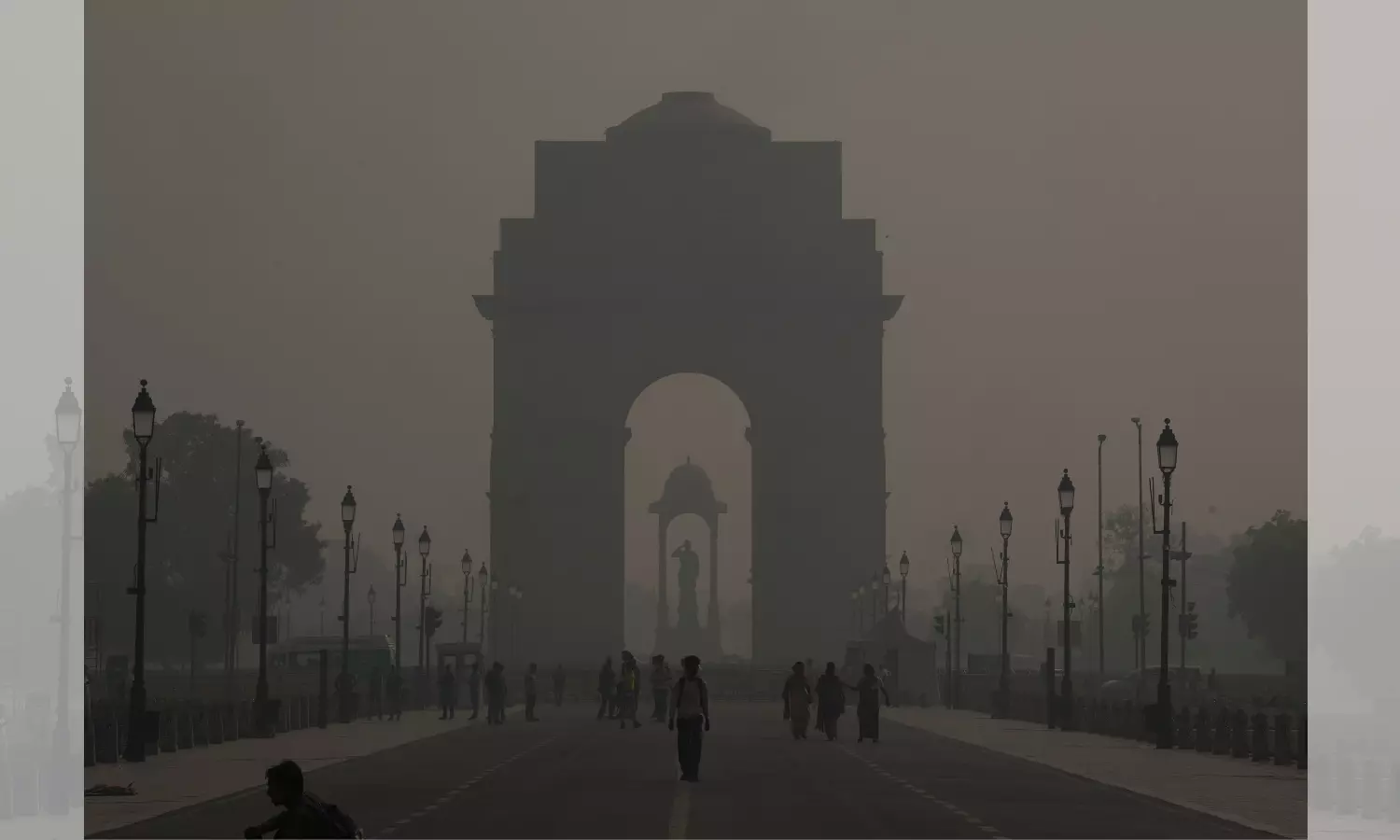Smog blankets Delhi as residents defy firecracker ban, air quality drops to very poor

A thick blanket of smog covers the India Gate and Kartavya Path, in New Delhi, Thursday, Oct 31, 2024. The air quality in some areas of the national capital was recorded in the 'severe’ category with smog engulfing various parts. (PTI Photo/Kamal Singh)
New Delhi: Relentless bursting of firecrackers blanketed Delhi in dense smoke on Thursday, causing severe noise pollution and reducing visibility, as people defied a ban on firecrackers to celebrate Diwali. The city's air quality dropped to the "very poor" category, with an Air Quality Index (AQI) of 330 at 10 pm.
Key areas, including Anand Vihar, saw the AQI plunge into the "severe" category while PM2.5 concentrations soared, creating hazardous conditions for respiratory health.
In contrast to the clearer sky on Diwali last year, when favourable conditions kept the AQI at 218, this year's celebrations returned the city to its notorious pollution levels, a pattern worsened by unfavourable meteorological conditions, stubble burning and vehicular emissions.
Although the city government had set up 377 enforcement teams and spread awareness through local associations to ensure compliance with the firecracker ban, neighbourhoods across east and west Delhi reported large-scale flouting of the restrictions.
The city's 24-hour average AQI was recorded at 330, up from 307 the previous day.
The smog-laden sky brought back memories of the "severe" pollution in 2020 as the PM2.5 and PM10 levels surged to 145.1 and 272 micrograms per cubic metre respectively at 9 pm. These fine particles, which easily penetrate the respiratory system, pose serious health risks, especially for children, the elderly and those with pre-existing respiratory conditions.
In an effort to combat the spike in pollution, the Delhi government had enforced a comprehensive ban on firecrackers for the fifth consecutive year, prohibiting their manufacture, storage, sale and use.
Delhi Environment Minister Gopal Rai mobilised 377 enforcement teams, working closely with resident welfare associations, market committees and social organisations to ensure compliance.
Police teams were deployed to monitor neighbourhoods, with officials warning that legal action would be taken against violators under provisions of the Bharatiya Nyaya Sanhita (BNS) for defying government orders.
However, reports indicated widespread defiance of the ban across east and west Delhi, with firecrackers lighting up the sky in areas such as Jaunapur, Punjabi Bagh, Burari and East of Kailash.
Delhi's surrounding regions, including Noida, Ghaziabad and Gurugram, fared somewhat better, remaining in the "poor" AQI category, while Faridabad recorded a relatively moderate AQI of 181. Yet, unfavourable meteorological conditions, paired with emissions from vehicles, local pollution and stubble burning in neighbouring states, exacerbated the smog over Delhi-NCR, a phenomenon that peaks in winter.
According to the Delhi Pollution Control Committee (DPCC), the highest pollution levels are anticipated in early November as incidents of stubble burning in Punjab and Haryana are expected to rise.
Over the years, Delhi has seen fluctuations in the air quality on Diwali, recording an AQI of 312 in 2022, 382 in 2021 and 414 in 2020. Despite repeated government efforts to curb the use of firecrackers, the city's air pollution continues to spike during the festival.
( Source : PTI )
Next Story

